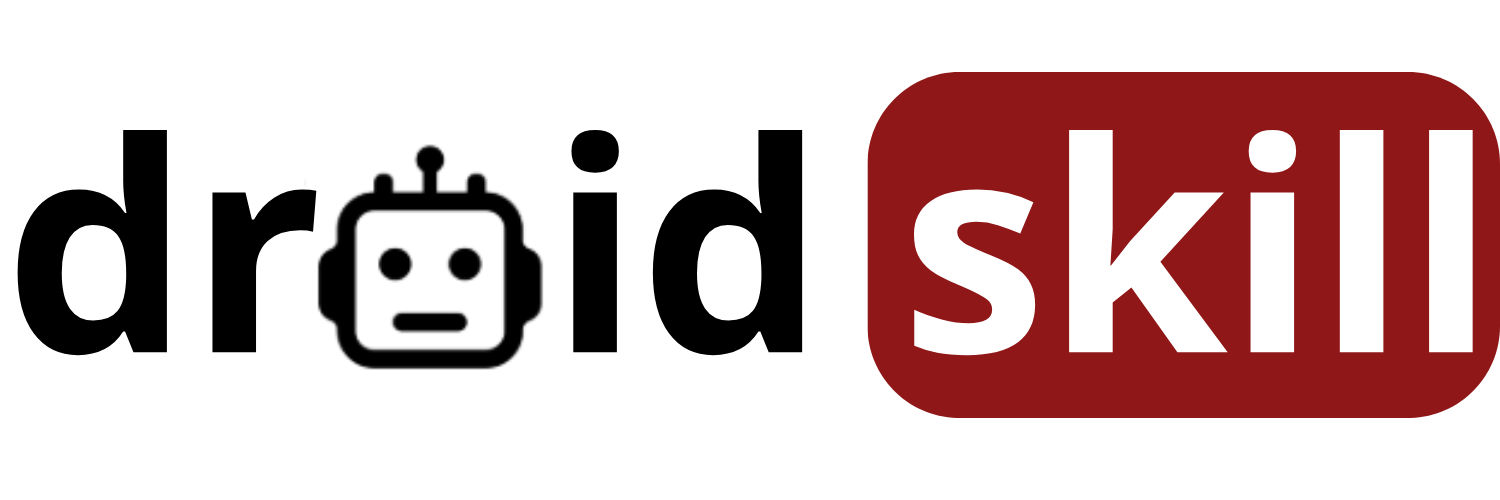Hey Android enthusiasts! Ever felt like your contacts are scattered all over the place? Juggling contacts between your phone, Google account, and other apps can be a real headache. But don't worry, I'm here to share some incredible tips and tricks to master contact syncing on your Android device. Get ready to say goodbye to duplicate entries and hello to a perfectly organized contact list!
Let's dive into the world of seamless contact management. We'll explore how to keep your contacts synchronized, backed up, and easily accessible across all your devices. Whether you're a seasoned Android user or just starting out, these tips will help you take control of your contact list like a pro.
1. Google Contacts
Google Contacts is your best friend when it comes to syncing contacts on Android. It's seamlessly integrated with your Google account, making it super easy to keep your contacts backed up and synchronized across all your devices. This ensures that any changes you make on one device are automatically reflected on all your other devices connected to the same Google account.
To make the most of Google Contacts, make sure your contacts are being saved to your Google account by default. You can check this in your phone's settings under Accounts or Google. Select your Google account and ensure that Contacts syncing is enabled. This way, any new contacts you add will automatically be saved to your Google account and synced across all your devices.
Google Contacts also offers a web interface, allowing you to manage your contacts from your computer. This can be especially useful for merging duplicate contacts, adding detailed information, or organizing your contacts into groups. The changes you make on the web will automatically sync to your Android device, keeping your contact list consistent across all platforms.
Link to Playstore: Google Contacts
Link Pencarian ke Playstore: Google Contacts
2. Contacts Sync Adapter
The Contacts Sync Adapter is a crucial component of the Android operating system that handles the synchronization of contacts between your device and various accounts, such as Google, Microsoft Exchange, and social media platforms. It acts as a bridge, ensuring that your contact information is consistent and up-to-date across all your connected services.
If you're experiencing issues with contact syncing, such as contacts not appearing or changes not being reflected, the Contacts Sync Adapter might be the culprit. You can try clearing the cache and data of the Contacts Sync Adapter to resolve these issues. To do this, go to your phone's settings, find Apps or Application Manager, and locate Contacts Storage or Contacts Sync Adapter. From there, you can clear the cache and data.
It's also important to ensure that the Contacts Sync Adapter is enabled for the accounts you want to sync. You can check this in your phone's settings under Accounts or Google. Select the account you want to sync and make sure that Contacts syncing is enabled. If it's already enabled, try toggling it off and on again to refresh the connection.
Link to Playstore: Contacts Sync Adapter
Link Pencarian ke Playstore: Contacts Sync Adapter
3. Microsoft Exchange Contacts
If you use Microsoft Exchange for work or personal email, you can easily sync your Exchange contacts with your Android device. This allows you to access your work contacts on your phone and keep them synchronized with your Exchange account. To set up Exchange contact syncing, you'll need to add your Exchange account to your Android device.
Go to your phone's settings and find Accounts or Add Account. Select Microsoft Exchange or Corporate and enter your Exchange email address and password. Your device will then connect to your Exchange server and prompt you to configure the sync settings. Make sure that Contacts syncing is enabled to synchronize your Exchange contacts with your Android device.
Once Exchange contact syncing is set up, your Exchange contacts will appear in your phone's contact list alongside your Google contacts and other contacts. Any changes you make to your Exchange contacts on your phone will automatically sync back to your Exchange server, and vice versa. This ensures that your work contacts are always up-to-date, no matter where you access them.
Link to Playstore: Microsoft Exchange Contacts
Link Pencarian ke Playstore: Microsoft Exchange Contacts
4. Third-Party Contact Apps
While Google Contacts is a great option for syncing contacts, there are also several third-party contact apps available on the Play Store that offer additional features and customization options. These apps can be especially useful if you need more advanced contact management capabilities or want to integrate your contacts with other services.
Some popular third-party contact apps include Truecaller, which offers caller ID and spam blocking features, and Contacts+, which integrates your contacts with social media and email. These apps can provide a more comprehensive view of your contacts and help you stay connected with the people who matter most.
When choosing a third-party contact app, be sure to consider its features, user interface, and privacy policy. Some apps may collect and share your contact information with third parties, so it's important to choose an app that you trust. Also, make sure the app is compatible with your Android device and supports the contact syncing features you need.
Link to Playstore: Third-Party Contact Apps
Link Pencarian ke Playstore: Third-Party Contact Apps
5. SIM Card Contacts
In the old days, people used to save contacts directly to their SIM cards. While this is less common now, some users may still have contacts stored on their SIM cards. If you have contacts on your SIM card, you can import them to your Google account or another contact app to keep them backed up and synchronized.
To import contacts from your SIM card, go to your phone's contact app and look for an Import or Import/Export option. Select Import from SIM card and choose the contacts you want to import. You can then choose to save the imported contacts to your Google account or another contact app.
It's generally recommended to save your contacts to your Google account rather than your SIM card. This ensures that your contacts are backed up and synchronized across all your devices, and you won't lose them if you lose or damage your SIM card. However, if you prefer to keep your contacts on your SIM card, you can still do so, but be aware that they won't be automatically backed up or synchronized.
Link to Playstore: SIM Card Contacts
Link Pencarian ke Playstore: SIM Card Contacts
6. Exporting and Importing Contacts
Sometimes, you may need to export your contacts from one account or device and import them to another. This can be useful when switching phones, transferring contacts between accounts, or backing up your contacts to a file. Android makes it easy to export and import contacts using the VCF (vCard) format.
To export your contacts, go to your phone's contact app and look for an Export or Import/Export option. Select Export to VCF file and choose the contacts you want to export. You can then choose where to save the VCF file, such as your phone's internal storage or an external SD card.
To import contacts from a VCF file, go to your phone's contact app and look for an Import or Import/Export option. Select Import from VCF file and choose the VCF file you want to import. The contacts in the VCF file will then be imported to your phone's contact list.
Link to Playstore: Exporting and Importing Contacts
Link Pencarian ke Playstore: Exporting and Importing Contacts
7. Resolving Duplicate Contacts
Duplicate contacts can be a real nuisance, cluttering up your contact list and making it difficult to find the right person. Fortunately, Android offers several ways to resolve duplicate contacts and keep your contact list clean and organized.
Google Contacts has a built-in feature that can automatically detect and merge duplicate contacts. To use this feature, open the Google Contacts app and look for a Merge duplicates or Fix & manage option. The app will then scan your contact list for duplicate entries and suggest merging them. You can review the suggested merges and choose which ones to accept.
If you don't want to use the automatic merge feature, you can also manually merge duplicate contacts. To do this, open the contact you want to merge and look for an Edit or Join option. Select the other contact you want to merge with and confirm the merge. The two contacts will then be merged into a single contact.
Link to Playstore: Resolving Duplicate Contacts
Link Pencarian ke Playstore: Resolving Duplicate Contacts
8. Contact Groups
Contact groups are a great way to organize your contacts and make it easier to send messages or emails to multiple people at once. You can create contact groups for family, friends, coworkers, or any other category you want.
To create a contact group in Google Contacts, open the app and tap the menu icon (three horizontal lines). Select Create label and enter a name for your group. You can then add contacts to the group by selecting them from your contact list.
Once you've created a contact group, you can easily send a message or email to all the members of the group. Simply select the group in your messaging or email app and compose your message. The message will then be sent to all the members of the group.
Link to Playstore: Contact Groups
Link Pencarian ke Playstore: Contact Groups
9. Contact Permissions
Android apps often request access to your contacts. While some apps may need access to your contacts to function properly, others may request access for unnecessary purposes. It's important to review the contact permissions of your apps and revoke access from apps that don't need it.
To review the contact permissions of your apps, go to your phone's settings and find Apps or Application Manager. Select the app you want to review and look for a Permissions option. You can then see which permissions the app has requested, including access to your contacts.
If you don't want an app to have access to your contacts, you can revoke the permission by toggling it off. However, be aware that revoking contact permission may affect the app's functionality. If the app needs access to your contacts to function properly, it may not work as expected.
Link to Playstore: Contact Permissions
Link Pencarian ke Playstore: Contact Permissions
10. Backing Up Your Contacts
Backing up your contacts is essential to protect them from loss or damage. If you lose your phone, your contacts will be safe and sound in your backup. Android offers several ways to back up your contacts, including using Google Contacts, exporting to a VCF file, or using a third-party backup app.
Google Contacts automatically backs up your contacts to your Google account. As long as you have contact syncing enabled, your contacts will be automatically backed up and synchronized across all your devices. This is the easiest and most convenient way to back up your contacts.
You can also export your contacts to a VCF file and save the file to your phone's internal storage or an external SD card. This is a good option if you want to have a local backup of your contacts. However, be sure to keep the VCF file in a safe place, as it can be lost or damaged if your phone is lost or damaged.
Link to Playstore: Backing Up Your Contacts
Link Pencarian ke Playstore: Backing Up Your Contacts
By following these tips and tricks, you can master contact syncing on your Android device and keep your contact list organized, backed up, and easily accessible across all your devices. Say goodbye to duplicate entries and hello to a perfectly organized contact list!


